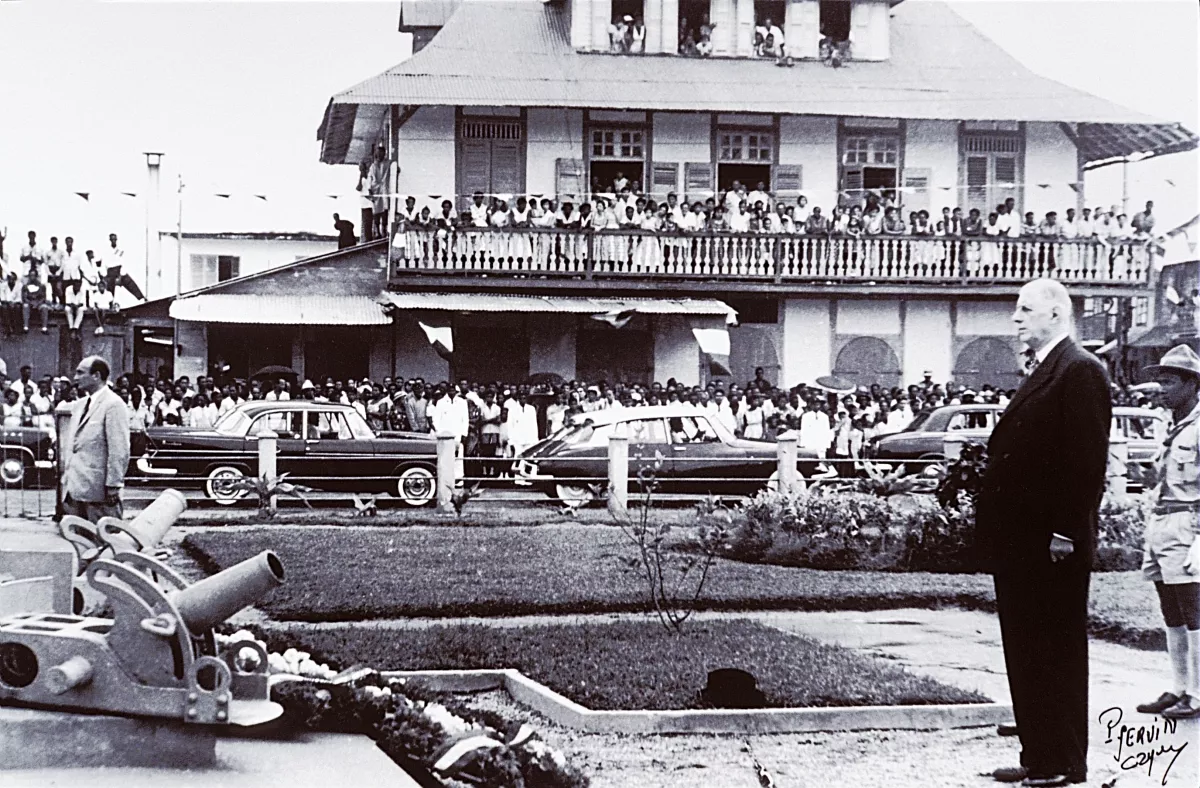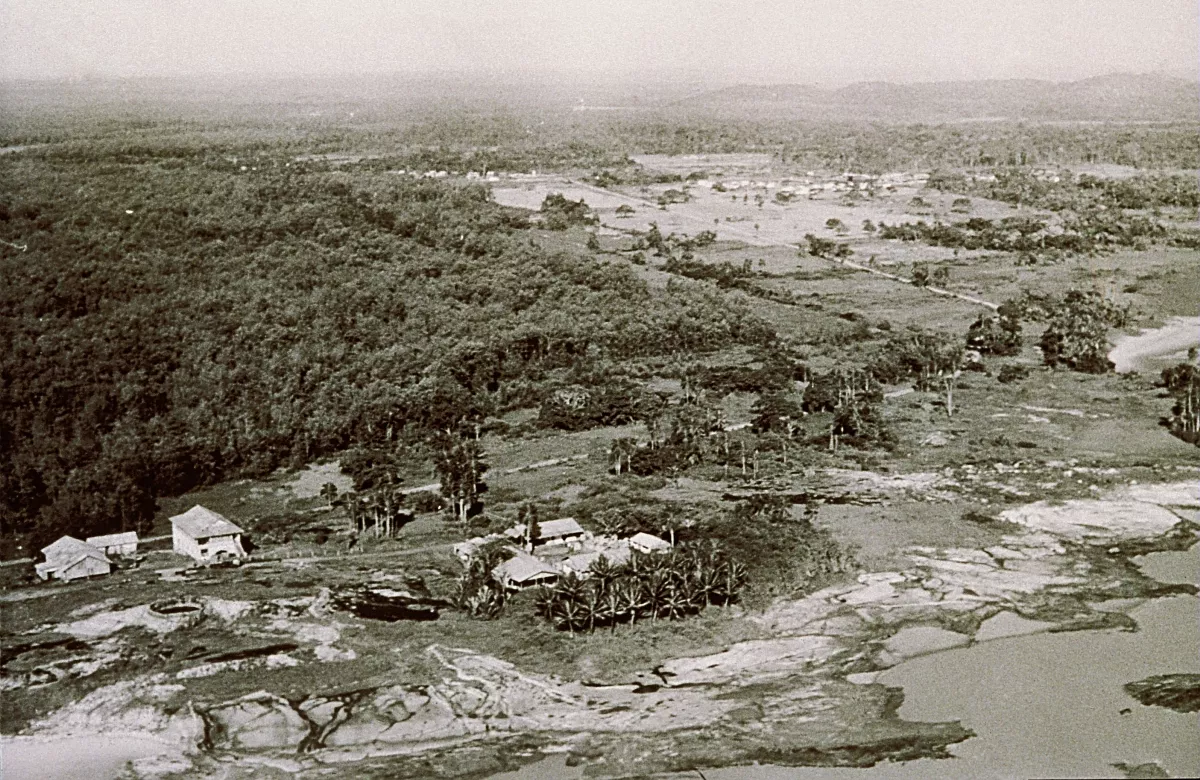From Algeria to French Guiana
The choice of location for Europe’s spaceport was no accident: few places in the world meet the selection criteria for this type of facility so well. However, before French Guiana, France took its first steps into space from Algeria...
France enters the space race
France, 1958. On his return to power, Charles de Gaulle, concerned about national independence, gave a new impetus to scientific research. Like the Soviet Union and the United States, the government felt it had a duty to take an interest in Space.
From January 1959, the coordination of French space activities led to the creation of a Space Research Committee. Two years later, on 19 December 1961, the French government passed a law creating the CNES.
First facilities in Algeria
When the French Space Agency was created, its first mission was clear: to find a launch site that would enable all space missions to be carried out under the best possible conditions.
Since 1948, France had been using the launch sites at Hammaguir and Colomb-Béchar in Algeria, then part of France. Initially used by the army for missile tests, these sites were made available to CNES for testing sounding rockets, followed by the first launch vehicles.
However, France had to look for a new site to develop its launch vehicles: Algeria gained independence in 1962, and the Évian Accords signed that year provided for the suspension of activity at the Saharan launch site and France's withdrawal in 1967.
While searching for a new launch site, the French Space Agency nevertheless continued its tests for five years, and on 26 November 1965, the Diamant launch vehicle lifted off from Hammaguir and placed Astérix, France's first satellite, into orbit.

Topaze on its Saharan launch pad. This rocket, part of the "precious stones" programme, was used to test the equipment that would make up the Diamant launch vehicle a few years later.
Seeking a new launch site
The French Space Agency’s preliminary study identified as many as 14 sites that could accommodate the new French launch site. Teams from CNES subsequently visited each site to determine the best one based on the following selection criteria:
• Possibility for polar and equatorial launches
• Close to the equator
• Large enough to guarantee launch safety
• Existence of a deep-water port with suitable handling facilities
• Airfield capable of handling long-haul aircraft (3,000 m runway)
• The shortest possible distance between the launch site and Europe
• Political stability
Selecting French Guiana
In February 1964, a report from the French Space Agency’s Scientific and Technical Department ranked the various sites according to their selection criteria. There were five possible locations, but French Guiana came out on top.
• The wide opening onto the Atlantic Ocean provided the possibility for all types of space mission, enabling launches to the East as well as to the North with a minimum risk to the surrounding population and property.
• At a latitude of 5.3° North, its proximity to the Equator allowed full use to be made of the slingshot effect, the energy provided by the Earth’s speed of rotation. This effect adds speed to the launch vehicle, which therefore requires less energy to take off.
• The low population density (45,000 inhabitants in 1964 for an area of 83,000 km², i.e. 1/7th the size of France), heavily concentrated on the coastal strip. The space available allowed for the installation of launch infrastructure.
• The possibility of installing radars and measurement antennae on the surrounding hills to monitor the launch vehicle during lift-off.
• An area sheltered from cyclones and earthquakes.
• Existing infrastructure that was relatively easy to adapt to the needs of the future spaceport (roads, airfield, ports and telecommunications network).
• A well-ventilated site with a very bearable climate despite its equatorial location.
On 21 March 1964, Charles de Gaulle travelled to Cayenne to inform the people of French Guiana that the French Space Centre would be built there, and on 14 April 1964, the Ministerial Council ratified the choice of French Guiana.

During his visit to French Guiana in March 1964, de Gaulle first announced that the Space Centre would be built in French Guiana.
14 April 1964 will in all likelihood go down as a key date in the history of French Guiana. The Spaceport will help it to flourish: this is a real opportunity for this region, provided that space activities are fully integrated into it. [...] I hope that the friendly people of French Guiana will soon be able to be proud of their region and their launch site!
Robert Aubinière, President of CNES - Speech in May 1964 to COSPAR, the Space Research Committee
A success story with difficult beginnings
However, although French Guiana is sparsely populated, it is not deserted: setting up the launch site required the expropriation of land occupied by the indigenous and Creole communities as early as 1965. Around 4,000 people had to be displaced, losing their land, villages and sites of worship, and seeing their traditional ways of life and ties to the land disrupted.
Spaceport-related expropriation is a complex and painful chapter in the history of French Guiana. Carried out as a matter of urgency, with inadequate compensation and ill-adapted rehousing solutions, the expropriation led to lasting frustration and a feeling of injustice among the local populations. It is important to remember this episode and its impact in order to better understand the social and environmental issues associated with the presence of Europe’s Spaceport.
However, these difficult beginnings gave rise to the success of this extraordinary project. An operational spaceport emerged from the savannahs, the town of Kourou was transformed into a city, and French Guiana became the place for the lift-off of Europe's flagship launch vehicles and emblematic space missions.

Village of Kourou in the early 1960s.
Find out more about the beginnings of Europe’s spaceport: 1964 - 1968, construction years